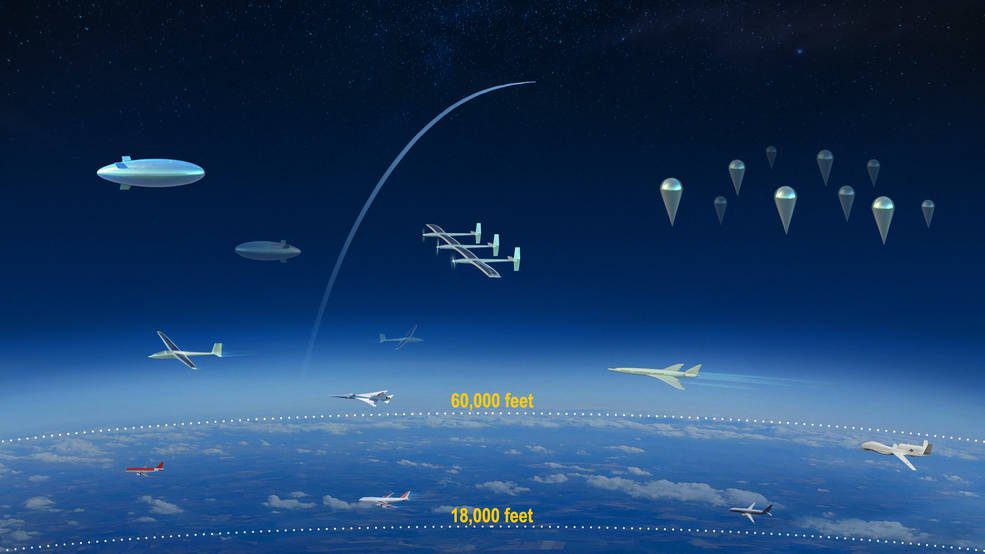“…When flying on a commercial airliner, it can feel like you’re on top of the world, riding higher than any airplane out there. But an increasing number of aircraft soon will be flying even higher and NASA is studying ways to manage that anticipated air traffic. Ranging from research balloons to military aircraft, these vehicles operate 60,000 feet above sea level – about twice as high as commercial airliners at cruising altitude. Designated in the United States as “upper Class E” airspace, the sky above 60,000 feet does not have stringent air traffic control rules since the vast majority of current aircraft are not capable of climbing to this edge-of-space altitude.
There just aren’t that many vehicles that need to be kept separated up there by air traffic managers.
However, this is likely to change in the near future. With commercial supersonic travel expected to take off, as well as plans for more high-altitude vehicles, the number of aircraft that can reach this altitude will soon require specific rules of the road. Enter one of NASA Aeronautics’ newest endeavors: Upper Class E Traffic Management, or ETM. This activity within the Air Traffic Management – Exploration project is researching how to create an air traffic management system that addresses the needs of upper Class E airspace. As a collaboration between NASA, the FAA, and industry partners, ETM also will investigate how to modify and implement successfully proven concepts developed for Unmanned Aircraft Systems Traffic Management (UTM) to the unique skyscape of upper Class E…
